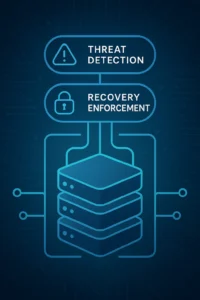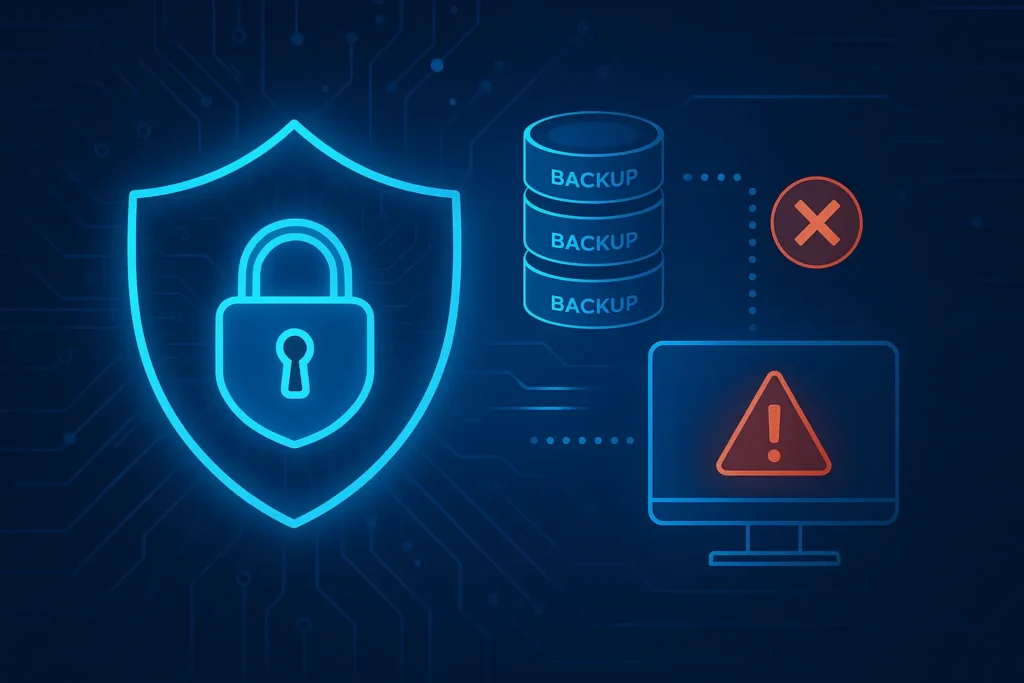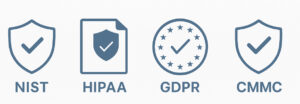Cyberstorage: The Definitive Guide to Storage-Layer Security in 2025
- Date: Jul 14, 2025
- Read time: 7 minutes
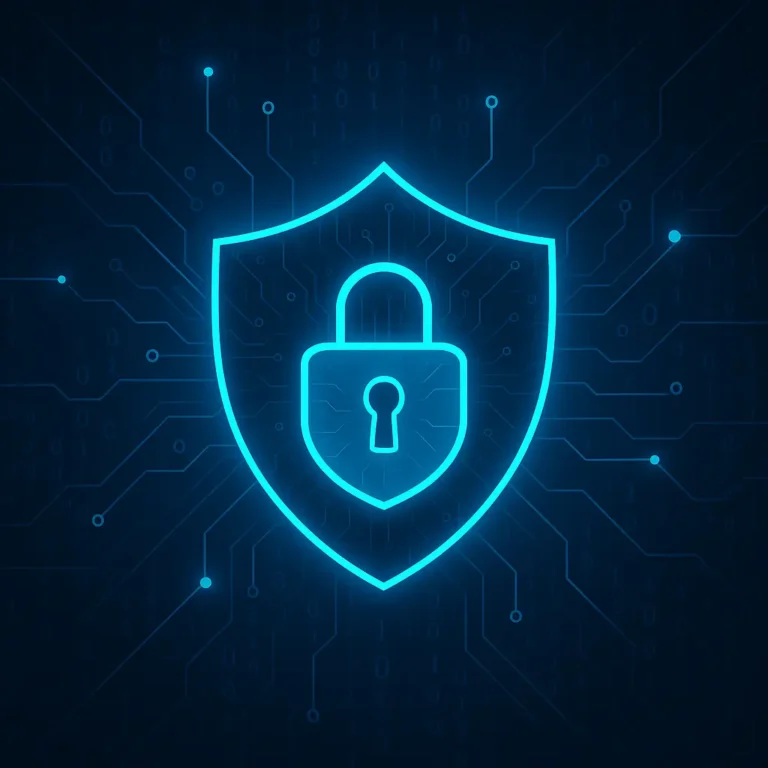
When ransomware bypasses your perimeter, what’s protecting your storage layer? This guide breaks down how cyberstorage closes the last major gap in your data security strategy—and why it’s becoming a must-have for IT leaders in 2025.
What Is Cyberstorage?
Cyberstorage is a next-generation storage layer designed to defend data right where it lives. Unlike traditional storage systems that rely on firewalls, antivirus, or endpoint tools to protect data indirectly, cyberstorage builds threat detection, access control, and recovery enforcement directly into the storage platform itself.
As ransomware, insider threats, and compliance mandates converge, organizations are realizing that the storage tier is no longer neutral ground. It’s a strategic control point—capable of either accelerating a breach or stopping it cold. Cyberstorage turns that tier into a real-time security ally.
Core Principles of Cyberstorage
-
Storage-layer enforcement: Applies security policies (like access controls, anomaly detection, and data retention) directly within the storage fabric—no reliance on upstream alerting or manual workflows.
- Resilient by design: Combines immutability, zero trust architecture, and embedded logging to ensure that recovery is clean, traceable, and fast—even during an active attack.
- Broad deployment: Supports major storage platforms such as Dell PowerScale, NetApp OnTap, AWS S3, and hybrid environments.
What Cyberstorage Is Not
- It is not just a backup product. Backups can be encrypted or deleted. Cyberstorage protects both live and archived data, continuously.
- It is not a perimeter tool. Firewalls and endpoint agents look outward. Cyberstorage watches from within—at the data layer itself.
- It is not storage with security bolted on. It’s storage designed with security as an integrated, primary consideration.
Cyberstorage is more than a set of features—it’s a shift in philosophy. It brings real-time detection, response, and recovery to the storage layer—helping organizations stay ahead of evolving threats.
Why Storage Is Now a Defensible Security Layer
For years, enterprise security strategies focused on the network edge—firewalls, endpoints, and threat feeds. But in today’s environment, attackers go straight for your backup systems and file repositories. Why? Because if they destroy your recovery layer, they win.
Modern ransomware strains bypass traditional defenses by targeting unstructured data and backup infrastructure directly. These threats operate silently—sometimes for weeks—before triggering encryption or deletion events.
That’s why cyberstorage matters. It shifts the security perimeter inward—making storage itself an active defense layer that can stop, isolate, and recover from attacks automatically.
What’s Changing in the Data Security Landscape?
- AI-enhanced attacks increase dwell time and sidestep signature-based tools
- Compliance requirements are driving demand for storage-level logging and integrity controls
Cyberstorage vs. Traditional Storage
Traditional enterprise storage was built for throughput, not threat defense. It assumes upstream tools—like antivirus or firewalls—will catch issues before data is ever touched. But that assumption no longer holds up.
Comparing Security Models
| Traditional Storage | Cyberstorage |
|---|---|
| Focuses on uptime and performance | Designed for resilience, security, and recovery |
| Relies on external tools for protection | Built-in zero trust controls and threat detection |
| Mutable backups vulnerable to encryption | Immutable storage and rollback-ready snapshots |
| Limited audit logging at the file level | Granular, real-time activity logging by default |
Core Capabilities of Cyberstorage
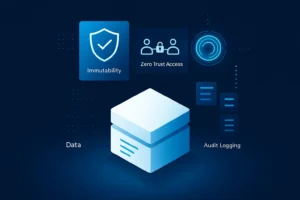
What You Can Expect From a Cyberstorage Platform
- Immutable Snapshots: Enforce policies to prevent unauthorized deletion or modification of backup copies.
- Inline Threat Detection: Identify ransomware patterns in real time and trigger containment.
- Zero Trust Access Enforcement: Enforce least-privilege access policies and supports Zero Trust principles at the storage layer.
- Automated Recovery Readiness: Automated snapshots help ensure that data is protected and can be quickly restored in the event of an incident.
- Audit-Ready Logging: Capture file-level actions for compliance, forensics, and root cause analysis.
Immutable Storage: The First Line of Recovery
When ransomware hits, your ability to recover depends on one thing: having untouched, trustworthy backup copies. That’s what makes immutable storage essential. It guarantees that once a file is written, it cannot be changed or deleted—not by attackers, not by insiders, and not by mistake.
Cyberstorage platforms enforce immutability across snapshots, volumes, and object storage layers using policy-based retention locks. Even if attackers gain admin access, your recovery points remain out of reach.
Key Benefits of Immutability
- Stops ransomware from encrypting or wiping backup data
- Provides verifiable evidence for compliance audits
- Supports rapid, clean recovery—without malware reinfection
Air Gapping: Securing Recovery from Network-Based Threats
Even with immutability, if your recovery systems stay online 24/7, they’re still vulnerable. Air gapping adds another layer of assurance—by separating backup infrastructure from the rest of your environment, either physically or logically.
A well-executed air gap strategy ensures that your most critical data remains inaccessible to ransomware, insider abuse, or lateral movement—even during a live incident.
Two Flavors of Air Gapping
- Physical Air Gaps: Disconnected systems (e.g., offline tape, dark sites) offering maximum isolation and control.
- Logical Air Gaps: Automated segmentation, delayed replication, or access restrictions that simulate the same isolation.
Incident Response & Recovery with Cyberstorage
Cyberstorage isn’t just about preventing attacks—it plays a pivotal role when they happen. In a breach scenario, every second counts. Containing damage and restoring clean data quickly can be the difference between a minor disruption and a full-scale outage.
How Cyberstorage Supports the IR Lifecycle
- Detection: Inline monitoring identifies ransomware behaviors like mass file encryption or unusual access patterns.
- Containment: Automated isolation prevents spread by cutting off access or freezing volumes mid-attack.
- Recovery: Immutable, verified backups enable rapid restoration with confidence that data is clean and complete.
- Forensics: Real-time audit trails support investigation, root cause analysis, and compliance documentation.
Compliance & Governance: Proving Control at the Storage Layer
Regulators are no longer satisfied with checkbox security. Frameworks like NIST 800-53, HIPAA, and GDPR now expect provable control of how sensitive data is stored, accessed, and restored. That’s where cyberstorage shines.
Because enforcement is embedded at the infrastructure level, cyberstorage simplifies evidence collection, enforces policy adherence automatically, and removes human error from your compliance equation.
Built-in Compliance Features
- Comprehensive auditing capabilities for full audit trails, supporting compliance and governance requirements
- Policy-based retention enforcement that aligns with industry-specific rules
- Encryption and MFA at the storage layer, not just at endpoints
Is Your Storage Cyber-Resilient?
You may have backups. You may have firewalls. But if your storage layer can’t defend itself, recovery becomes a gamble—not a guarantee. So how do you know if your current setup is truly cyber-resilient?
Start with these critical questions:
- Can your storage detect and isolate threats in real time—without external triggers?
- Are your backups immutable, segmented, and verified automatically?
- Does your infrastructure enforce least-privilege access at the data layer?
- Can you prove chain-of-custody and compliance without manual effort?
If the answer to any of these is “no” or “I’m not sure,” your risk isn’t theoretical—it’s active. Most organizations discover surprising blind spots once they conduct a formal audit of their storage security posture.
Choosing the Right Cyberstorage Platform
Not all storage platforms that claim “security” deliver true cyberstorage. Many simply rebrand existing tools with
a security veneer—without offering the architectural changes needed to detect, contain, or recover from modern attacks.
What to Look For
A true cyberstorage solution should meet the following criteria:
- Immutability that’s enforced, not optional—at the file, snapshot, and object level
- Inline threat detection built into the storage tier (not just alerts passed from elsewhere)
- Air gap strategies that support hybrid or multi-cloud workflows without adding complexity
- Native integrations with leading SIEM and SOAR platforms to streamline workflows and support timely incident response
- Audit-ready logging for file-level access and retention enforcement
Bottom line: True cyber resilience requires more than checkboxes—it demands architecture that’s built for defense and recovery from the ground up.
Featured Resources

Mastering Cybersecurity Insurance Negotiations: A Comprehensive Guide

Navigating the Digital Menace: A Beginner’s Guide to Ransomware

